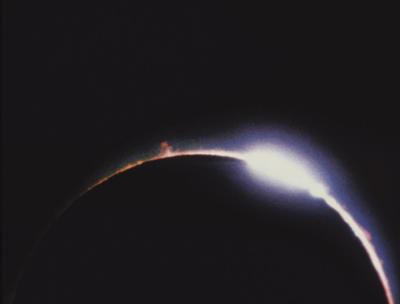The Great American Solar Eclipse of 2017 will take place Monday, and it’s best to be prepared, and that means having eclipse glasses.
“I recommend wearing certified and approved glasses the whole time you’re viewing the eclipse, from partial eclipse through totality and through the final partial eclipse, approximately two hours,” says Dr. Bill McCoy of McCoy Vision Clinic.
“If you stare at the sun too long without approved glasses it can literally burn the macula at the back of the eye, which is the central part of your vision. The damage is permanent and not correctable. Standard sunglasses do not give protection for the eclipse. You need certified and approved solar eclipse glasses that are verified compliant with the ISC12312-2 number on them.
The partial eclipse will start at 11:45 a.m. with totality taking place from 1:10 p.m. – 1:20 p.m., according to local astronomer Joe Shuster.
The duration varies but will last up to 160 seconds. After totality it will be a partial eclipse again until 2:45 p.m. The eclipse will take place even if it’s cloudy, but clear weather will mean that everyone will have the opportunity to view the partial eclipse and hopefully a total eclipse of the sun. Those on the center line will get to experience the maximum duration of the total eclipse, while those outside the center line will have a minimum duration. Salem and Dent County are outside the center line, but will have an eclipse of over 99 percent, according to Shuster.
A solar eclipse is an event that happens when the sun, the moon and the earth line up within their own orbits, with the moon in the middle. As seen from earth, the moon over a time span blocks the sun. A solar eclipse requires a new moon. A full shadow or total eclipse in called an umbra. The partial shadow before and after the total eclipse are called the penumbra.
During a solar eclipse the ground and sky will darken, animals will even prepare for sleep, and temperature drops of as much as 10 degrees can be experienced, Shuster says.
“Other fun stuff to expect during totality,” says Shuster, “are the sky will get really dark, like early night. So dark that planets and stars will be visible. The horizon will look like sunrise.”
The eclipse will start its path across the United States in Oregon and will continue in a southeast direction covering 12 states, in a 70-mile wide swath before exiting the states in South Carolina. When the totality hits the Oregon coast it will be moving at 2,955 mph. The shadow moves at different speeds across the country due to the curvature of the earth.
The center line of totality through Missouri covers 301.9 miles and provides the best view of total eclipse for up to two minutes and 40 seconds. In our immediate area, Jefferson City, Sullivan, Cuba, Potosi, Steelville and St. Clair are in that center line. St. James on one side of I-44 is in the center line with totality for a few seconds, however across the bridge is not. Farther from the center is still okay, you will still get one to two minutes of totality. Outside the path of the center line means your percentage of totality will vary. Salem, Licking, Rolla, Viburnum and Boss are outside the path. Salem will be over 99 of totality. But be aware that the 1/10 of one percent still visible sun can still cause eye damage without eclipse glasses,” says Shuster.
The last total solar eclipse to cross the state of Missouri was 148 years ago, on Aug. 7, 1869. The next expected total solar eclipse to pass over the continental U.S. is scheduled to happen in April of 2024 and will be visible from Texas to Maine.
Areas within the center line Monday are anticipating record crowds. People not only from the U.S. but many foreign visitors will be coming to share the great American eclipse. Expect traffic flow before, during and after the eclipse to be slow or possibly stopped on main roadways such as I-44 and I-70, as well as smaller highways within the centerline. Due to this massive influx of people, cell service is expected to overflow from morning until evening.
“We will be watching the eclipse, with our certified glasses, and I encourage others to watch, enjoy, experience it and do it in a safe way,” says McCoy.
“Always, not just during an eclipse, looking at the sun too long can damage your eyes. Using binoculars or telescopes to look at the sun will blind you faster. Do not attempt to look at the sun through them even if you’re wearing eclipse glasses,” says Shuster.
Learn more about the 2017 solar eclipse by Googling “eclipse Missouri”;
www.facebook.com/dentcountyastronomers; NASA: https://eclipse 2017.nasa.gov/eclipse
Learn more about safe viewing at eclipse.aas.org/eye-safety.









